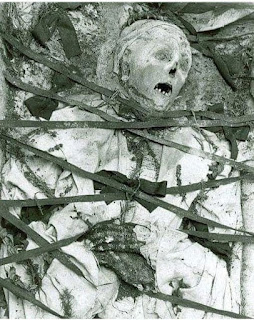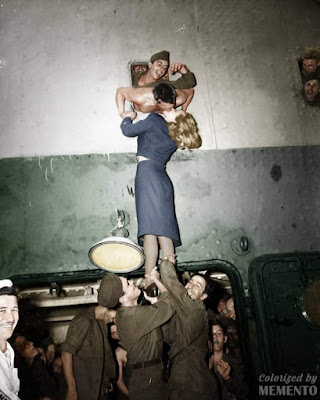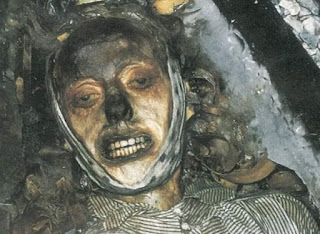Battle of Vitebsk
7 November (October 26 OS) 1812 marks the Battle of Vitebsk in Napoleon Bonaparte’s Russian Invasion when Major General Vasily Harpe’s 2,000 Russians, 100 Cossacks & 6 guns defeated Brigadier General François Pouget’s 1,500-2,000 French infantry & 2 guns. Despite the battle’s small scale, the loss of the Vitebsk Supply Depot had consequences that cannot be overstated. It doomed Emperor Napoleon Bonaparte’s Grande Armée to death by starvation & cold.
On 31 October (19 OS), Cavalry General Count Peter zu Wittgenstein breached Napoleon’s northern “Dvina Line.” Vengeful Russians poured into Napoleon’s rear. Wittgenstein sent detachments of several thousand each to seize or harass important targets. Chief among these was Vitebsk on the Dvina River. It was jammed with food & fodder, including 4,312 bushels (157 tons) of rye & flour, 1,437 bushels (53 tons) of oats, 230 bushels (8 tons) of cereals, 64 tons of hay & a great deal of salt. Its buildings would keep Napoleon’s men snug through the winter. It represented nothing less than his salvation.
Pouget’s brigade (37e & 124e Ligne) garrisoned the city. On 4 November, Marshal Claude Victor ordered him to retreat to Smolensk. Pouget sent 200 men & the hospital ahead. His own departure was delayed. On 5 November, Victor sent orders that, as an attack was unlikely, Pouget was to stay, or return if he’d already left. Pouget planned for a retreat anyway. His sappers prepared to fire the Dvina Bridge. He received word from Marshal Laurent Saint-Cyr. St. Cyr was retreating to Smolensk. He received a new letter from Victor, restating the order to hold Vitebsk.
Wittgenstein was determined to seize Vitebsk’s supplies. He sent Harpe south with a strike force – 4 infantry battalions (2 of Navaginsk Pekhota, 1 of 26th Jägers & the 7th Group of Saint Petersburg Opolchenie), 4 cavalry squadrons (1 of Riga Draguny, 2 of Yamburg Draguny & 1 of Pol'sha Ulany), 1 sotnia (Kalmyk Cossacks) & 6 horse guns. Harpe moved south. At dawn, 7 November, he reached Vitebsk. He attacked at once. Lieutenant Colonel Nikolay Stolypin led the Yamburgs down the Dvina’s left bank. Harpe led the rest down the right bank.
Pouget was completely surprised. The Riga Gate guards were seized & disarmed at once. The bridge guards managed to fire its right side before retreating to the buildings on the left bank. Colonel Pavel Shemiot led the St. Petersburgs & dismounted Ulany in a charge over the burning bridge. Harpe arrived with the Jägers & horse guns. He blasted the buildings with canister. The French retreated into Vitebsk. Pouget made a stand in the square with 2 guns. A Navaginsky battalion & Vitebsk’s civilians extinguished the bridge.
Major Karl Winter led the remaining Navaginskys, Ulany & the Rigas over. They drove Pouget out & took many prisoners. Pouget retreated along the Smolensk Road with over 1,000 men & his guns. Hoping Vitebsk might be retaken, he didn’t burn the supplies. In their haste, his gunners didn’t take enough charges. Stolypin & the Kalmyks pursued him. Pouget deployed on good ground, 16 km (10 miles) away in Vorony. He formed a giant square. Stolypin didn’t hesitate. He charged, broke the square, scattered Pouget’s men & captured him.
Harpe lost 44 dead/wounded. Pouget lost 600 dead/wounded, 400 captive (including him, Vitebsk Commandant Colonel Shevardo, Besenkovichi Commandant Colonel Fuc, Captain Decharme, 8 officers & 7 gendarmes), 2 guns, 4 caissons & all his horses, supplies & baggage. Prisoners told Harpe that Napoleon had left Moscow in full retreat. The news caused a surge of elation at Wittgenstein’s headquarters. The dream of Russian deliverance from French occupation was coming true! His men pursued Napoleon with a new fervour & violence.
Shortly after the battle, the first of Napoleon’s starved & exhausted men stumbled into Smolensk, 137 km (85 mi) southeast of Vitebsk. Napoleon began preparations to move to Vitebsk, where he planned to winter. Then he learned Vitebsk & all its supplies were no longer his for the taking. This news sent a shockwave through his army. Vitebsk had been their last, slender ray of light in the grim, freezing vastness of Russia. A terrible sense of doom rolled through the men. They now had no food, no fodder, no warmth & no hope.
On the Dvina’s west bank, a red granite obelisk was unveiled on 7 November, 1912, exactly 100 years later. It reads, “Immortal valor of the heroes of the Patriotic War, participants in the battles near Vitebsk on July 13, 14 & 15 & October 26, 1812.” Also in 1912, a pedestal with a cast iron cross was erected in Vorony. One side reads “Here the Yamburg Dragoons of October 1812, under the command of their glorious Colonel Stolypin, crushed the square of the French infantry & captured General Pouget and his artillery.” The other reads, “Yamburg Lancers to their glorious ancestors, 1912.”
(I owe a great debt to the scholar Peter Phillips, whose translation of Russian primary sources was invaluable.)











Comments
Post a Comment